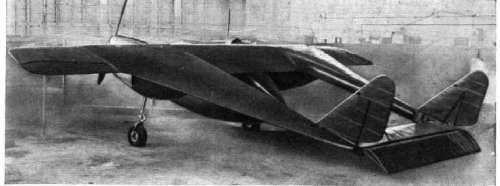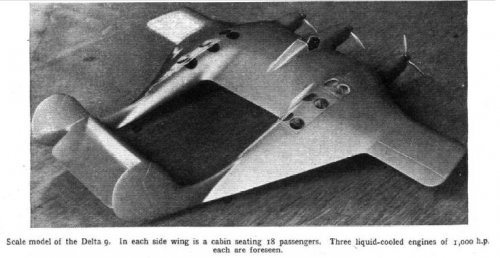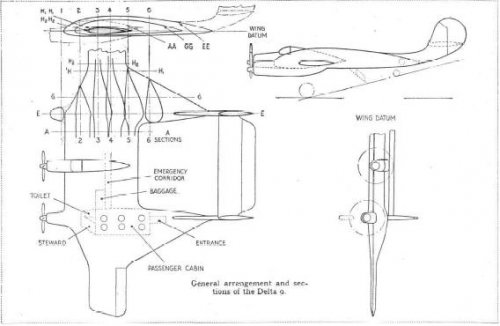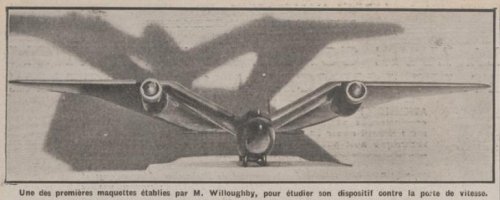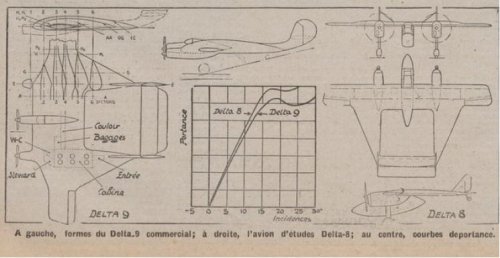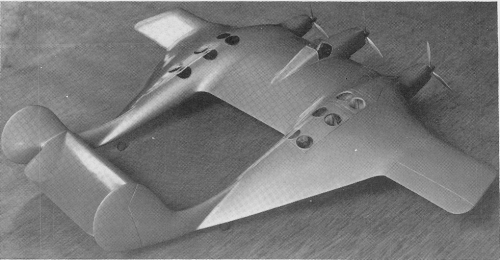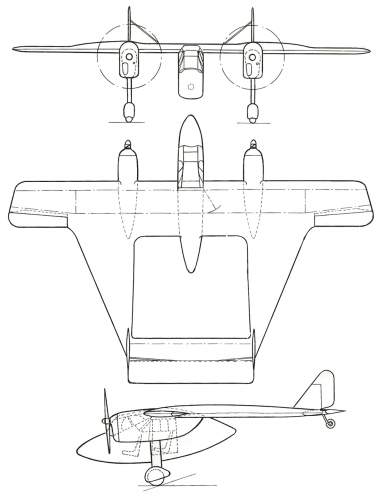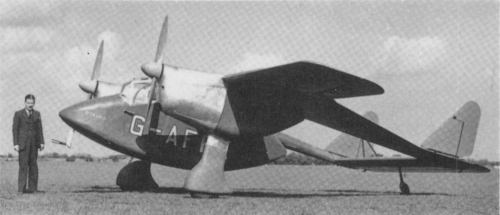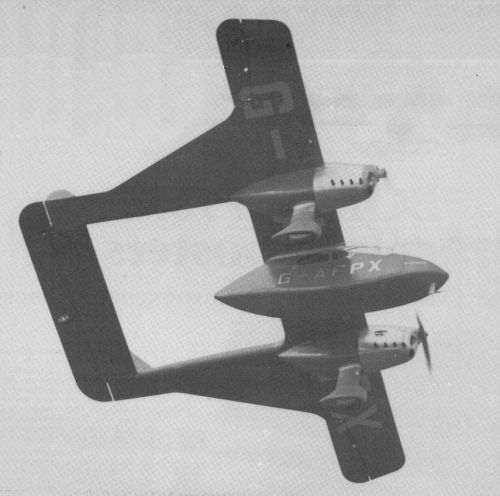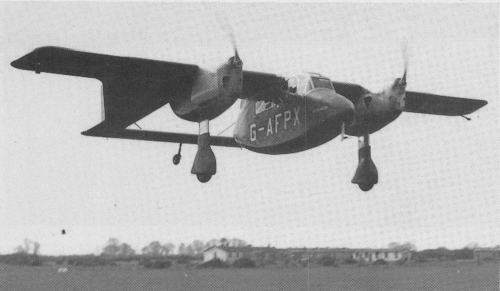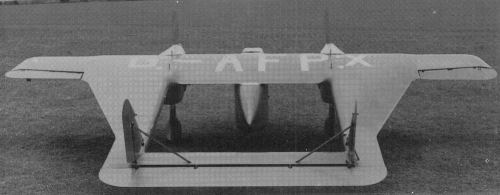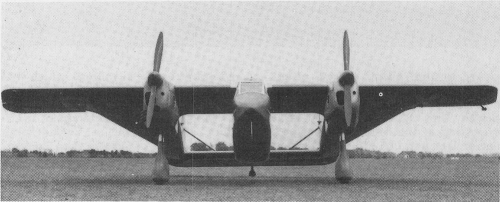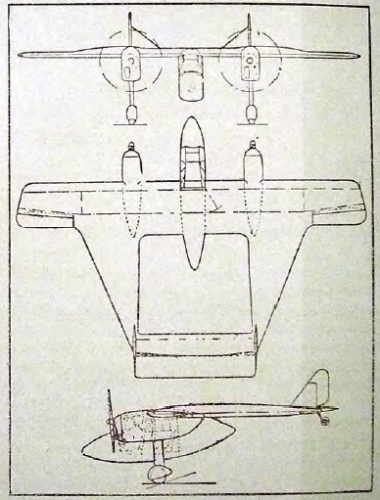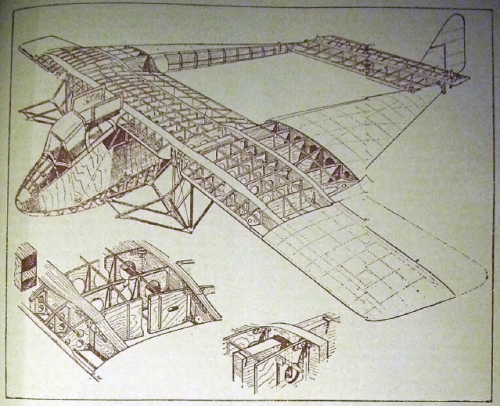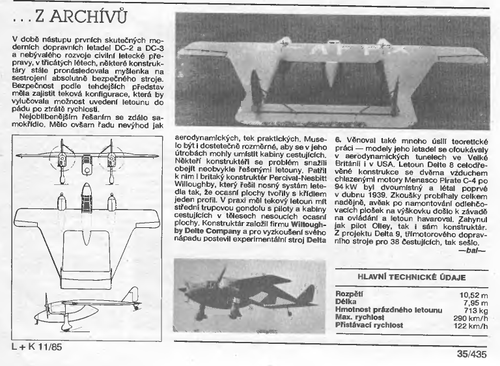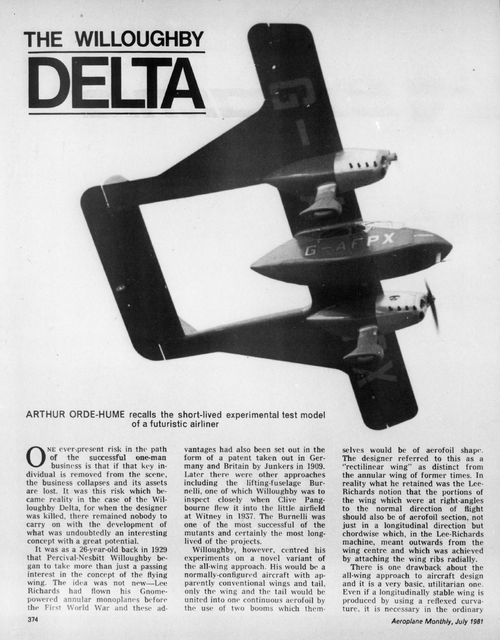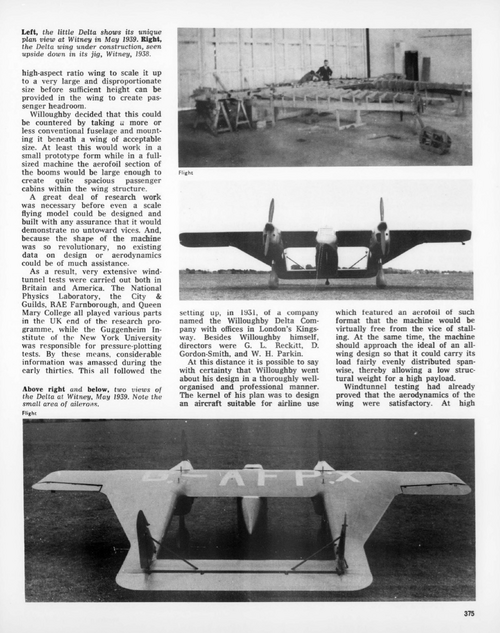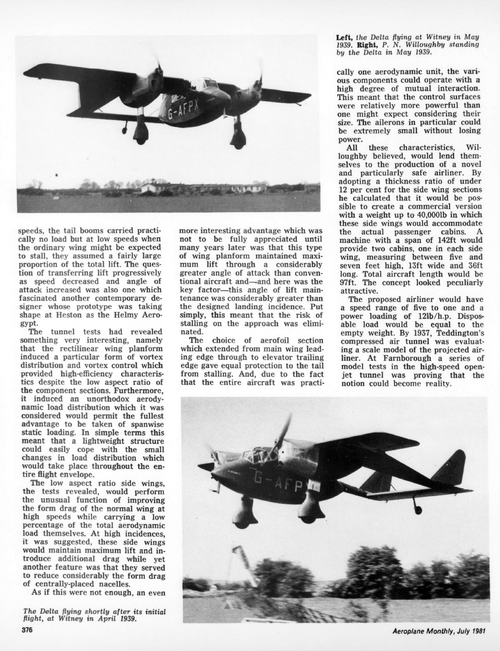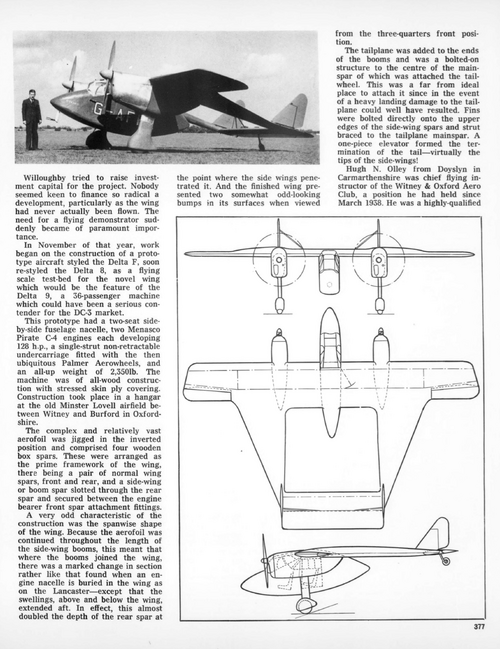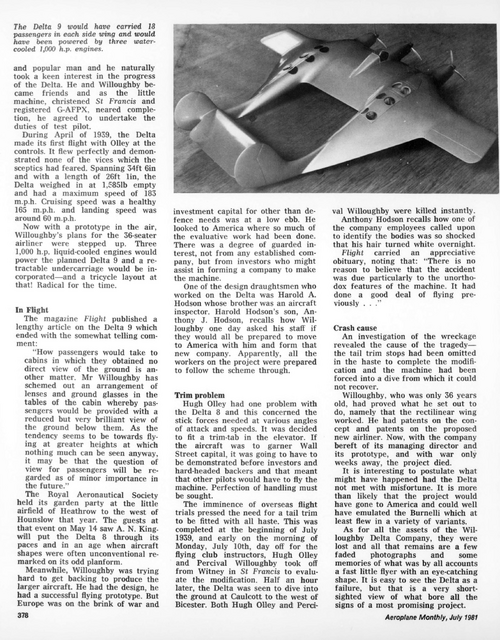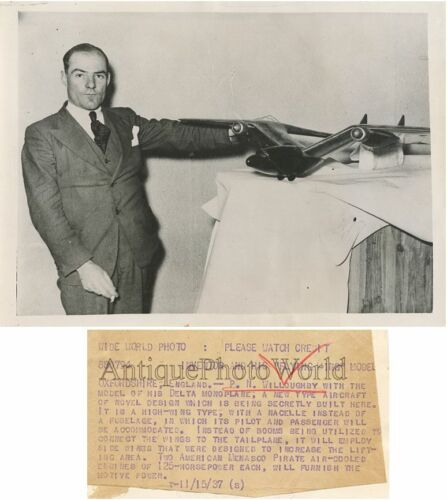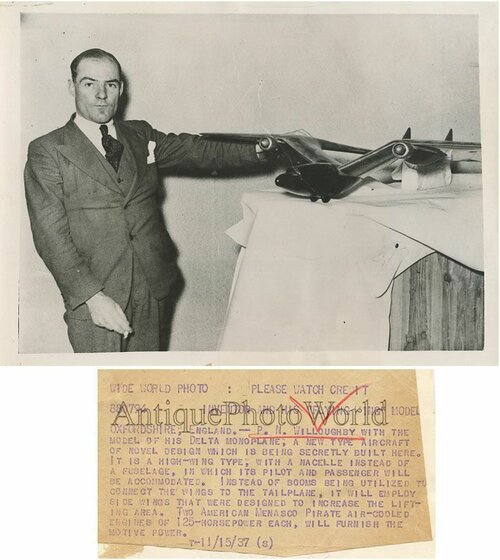From 'Aeroplane Monthly', July 1981, pp. 374-378.
Originated by Percival Nesbitt Willoughby, the 'Rectilinear Wing' concept was a variation on the all-wing approach to aircraft construction. In this case, an aircraft with conventional wings and tailplane would have them united into one continuous aerofoil by means of twin booms, each of aerofoil section, both fore-and-aft, and chordwise. The aerofoil shaped booms would provide sufficient thickness to serve as passenger cabins.
Since this was a new, revolutionary shape in aircraft, no existing data or information was available. Therefore, extensive tests were carried out, in both Britain, and the USA. In Britain, the National Physical Laboratory, the City and Guilds, the RAE Farnborough, and Queen Mary College all took part, while in the US, the Guggenheim Insitute performed pressure plotting tests.
All this testing showed that the aerodynamic design was satisfactory. At high speeds, the tail booms carried virtually no load, but as speed decreased, the lift load carried by the booms increased markedly. In addition, the unusual vortex distribution of this configuration produced high efficiency despite the low aspect ratio of the wing, booms, and tailplane. Further, it found that lift would still be generated at an angle of attack exceeding the normal landing incidence, in other words, the risk on stalling on the approach was eliminated. In addition, tailplane stall was expected to be impossible, and through aerodynamic interaction, the control surfaces could be made smaller and still retain their power.
Willoughby schemed a passenger aircraft, the Delta 9, capable of carrying 36 passengers, as a DC-3 competitor. Three engines,liquid cooled, and of 1,000hp each, would power the aircraft, which would feature a retractable tricycle undercarriage (interestingly, the model shows a tailwheel under each boom). Passengers would carried in the booms, with roof windows for lighting, and, as mentioned in Flight magazine, "...an arrangement of lenses and ground glasses in the tables of the cabin whereby passengers would be provided with a reduced but very brilliant view of the ground below them."
He attempted to raise investment capital but failed, so decided to build a flying demonstrator. This was the Willoughby Delta 8 (also referred to as the Delta F). This was a two-seat prototype, powered by two 128hp Menasco Pirate C-4 engines, and a non-retractable undercarriage. The pilot and observer were housed in a fuselage nacelle attached to the wing undersurface. Construction was all wooden. The wing had two conventional spars, and two boom spars ran aft to the tailplane spar, to the middle of which was attached the tailwheel. Twin fins were attached to the ends of the boom spars, and braced to the tailplane. Span was 34'6", length 26'1", and empty weight was 1,585lbs.
Built at Witney Aerodrome, the Delta 8 was first flown in April 1939 by Hugh Olley. The aircraft flew perfectly, maximum speed was 183mph, cruising speed 165mph, and landing speed 60mph.
Unfortunately, with Europe on the brink of war, Willoughby was unable to raise finance for the development of the large machine. He looked to America, with some limited success, at one point asking his workforce if they were willing to relocate to the US to continue the project. Apparently, they all agreed.
Despite it's good flying characteristics, the Delta 8 suffered from high elevator stick forces, and so it was decided to fit an elevator trim-tab. This was quickly fitted, and on Monday July 10th, Olley, with Willoughby as observer, took off in the Delta 8, named 'St Francis', to test the tab. Half an hour later, the aircraft was seen to dive into the ground near Bicester. Both Olley and Willoughby were killed. Investigations showed that in the haste to fit the trimmer, no limit stops had been fitted, with the result that the aircraft was forced into a 'graveyard dive'. Willoughby was 36 years old. With his death, and war only weeks away, the Delta project evaporated.
cheers,
Robin.

